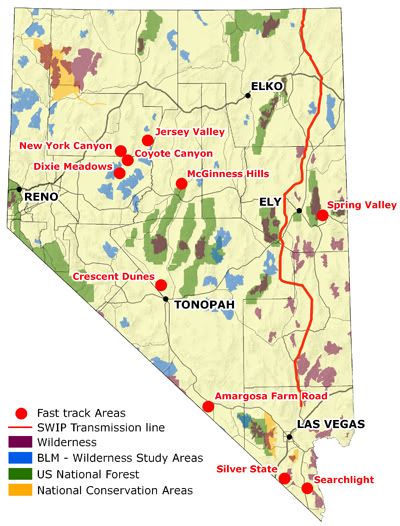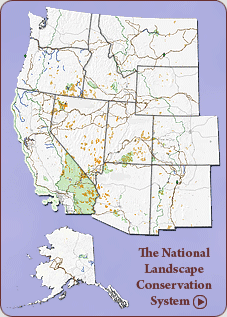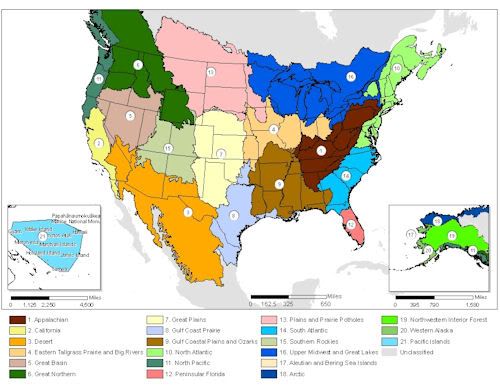( – promoted by buhdydharma )
In case you didn’t know, Solar, Wind, Geothermal Projects, are being “Fast Track” by the Obama Administration.
Fast Tracking attempts to minimize the red tape, in order to get the boots on the ground as soon as feasible.
They are OUR Public lands by the way. We should use them to secure our Energy Future while protecting our wonderful Natural Heritage.
Here are the highlights:
BLM> California> California Desert District> Alternative Energy> Fast-Track Projects
Fast-Track Renewable Energy Projects
Solar
Ivanpah BrightSource Solar Project
The 400-megwatt project would incorporate seven 459-foot tall power towers and 214,000 heliostats (each holding two flat mirrors).
The project’s power plants would share an administrative complex/construction logistics area on approximately 4,073 acres of public land.
Solar Millennium Blythe Solar Project
a thermal parabolic trough electrical generating facility capable of generating 986 megawatts of renewable power.
proposed footprint is approximately 6,300 acres.
Solar Millennium Palen Solar Project
a thermal parabolic trough electrical generating facility capable of generating 484 megawatts of renewable power.
proposed facility footprint will be approximately 3,800 acres
Solar Millennium Ridgecrest Solar Project
The 250-megawatt project would cover 4,640 acres
Stirling Energy Systems Solar Two Project
a 750 megawatt solar generation power plant
Stirling Energy Solar One Project
850-megawatt solar generation power plant
on 8,230 acres of public land
FirstSolar Desert Sunlight
thin film technology, photo voltaic array, electrical generating facility capable of generating 550 megawatts of renewable power.
proposed project site is located on approximately 4,410 acres of public land.
Chevron Energy Systems Lucerne Valley Solar Project
180,000 photovoltaic panels with a generating capacity of 20 megwatts; phase II would consist of the same configuration for a total generating capacity of 45 megawatts.
Wind
AES Daggett Ridge Wind Energy Project
82.5 megawatt on approximately 1,577 acres of BLM managed land and 380 acres of private land
Granite Mountain Wind Energy Project
73 megawatts of renewable power
Tule Wind Energy Project
generating 200 megawatts of renewable power.
Transmission
Barren Ridge Transmission Project
new 60-mile long, 230-kilovolt line to bring renewable energy to its customers.
Devers-Palo Verde No. 2 Transmission Project
The proposed new 500 kilovolt line would stretch 230 miles
Eldorado – Ivanpah Transmission Project
upgrading and replacing approximately 36 miles of an existing 115 kV transmission line with a new double circuit 220-kV line
The proposed line would handle electricity produced from renewable energy project proposals in and around the Ivanpah Valley.
Last updated: 09-27-2010
And just one state over … in the Great Basin …
Here are all the “fast-track” renewable energy projects taking place in Nevada
Currently, there are 5 geothermal, 3 solar, 2 wind and 1 transmission line projects

Here’s the BLM Fast Track summary page, covering old and new projects:
BLM> Energy> Renewable Energy Resources
Fast-Track Renewable Energy Projects
Fast-track projects are those where the companies involved have demonstrated to the BLM that they have made sufficient progress to formally start the environmental review and public participation process. These projects are advanced enough in the permitting process that they could potentially be cleared for approval by December 2010, thus making them eligible for economic stimulus funding under the American Recovery and Reinvestment Act of 2009.
A number of other renewable energy projects also are on fast-track status and could soon be ready for environmental study and public review.
All renewable energy projects proposed for BLM-managed lands will receive the full environmental reviews required by the National Environmental Protection Act and will include the same opportunities for public involvement as are required for all other land-use decision making by the BLM.
Last Updated: September 20, 2010.
—————–
And in case you didn’t know, the Bureau of Land Management (BLM) is also taking serious steps to address Climate Change, AS IF IT IS NOW occurring.
They have also adopted Eco-based regional land management strategies, known as Landscape Conservation Cooperatives (LCC). These will be interagecy, private-public partnerships, designed to better manage our diverse Natural Heritage.
Statement of Robert V. Abbey, Director
Bureau of Land Management
U.S. Department of the Interior
Before the House Committee on Appropriations
Subcommittee on Interior, Environment, and Related Agencies
Hearing on the FY 2011 Budget Request
of the Bureau of Land Management
March 9, 2010
FY 2011 Budget Initiatives (pdf)
In its FY 2011 proposed budget, the BLM will focus on the following initiatives and priorities: New Energy Frontier, Climate Change Adaptation, Treasured Landscapes, Youth in Natural Resources, and reforming the Wild Horse and Burro program. Under these initiatives and priorities, the BLM will be promoting clean energy development; confronting the impacts of climate change; taking a landscape-scale approach to conservation; connecting young people to the outdoors; and putting the BLM’s Wild Horse and Burro program on a sustainable track.
[…]The BLM’s FY 2011 budget request supports this goal and enables continued progress in the following vital, ongoing efforts to develop renewable energy resources on the public lands:
In late 2010, the BLM expects to issue a draft Solar PEIS, which is a landscape-scale plan for siting solar energy projects on public lands in the Southwest. This plan assesses the solar energy potential of 23 million acres of public land, and it includes a detailed review of 24 Solar Energy Study Areas.
— The BLM is “fast-tracking” 27 solar, wind, and geothermal energy projects that have the potential to qualify for financial incentives under the Recovery Act. The fast-track process focuses staff and resources on the most promising renewable energy projects, while ensuring the full environmental review required by the National Environmental Policy Act.
— The BLM is actively processing a total of 130 solar energy project applications involving 1.2 million acres of public land.
— The BLM is processing 249 wind energy applications — 207 for wind testing and 42 for wind project development.
— The BLM is also processing 22 geothermal plans of development.
— Renewable Energy Coordination Offices are working in four states to expedite review of solar, wind, and geothermal energy projects on BLM-managed lands.
[…]Climate Change Adaptation
The Secretary’s Climate Change Adaptation initiative recognizes the need to understand the condition of BLM-managed landscapes on a broad level; identify potential impacts from climate change; and develop and implement strategies to help native plant and animal communities, as well as public land users and local communities, adapt to climate change. The BLM is coordinating its efforts with other DOI bureaus and other partners through a network of Landscape Conservation Cooperatives (LCC). The work of the LCCs will help inform, facilitate, and integrate the on-the-ground management activities of the DOI’s resource management bureaus. The President’s proposed FY 2011 budget for the BLM includes a $2.5 million increase in support of the Climate Change Adaptation initiative, in addition to the $15 million the BLM received in FY 2010.
As part of this initiative, in 2009, the BLM and its partners completed pilot landscape-scale assessments in four eco-regions. In 2010, working with the LCC concept, the BLM and its partners are initiating landscape-scale assessments in an additional six eco-regions and are developing proposed management strategies for the four eco-regions with completed assessments. In 2010, the BLM is also undertaking on-the-ground restoration projects to help public land resources adapt to the effects of climate change. In 2011, BLM will complete the assessments for those eco-regions with significant public land ownership; develop management strategies for the six new eco-regions with completed assessments, and begin to implement the management strategies for the initial four eco-regions with assessments completed in 2009. In 2011, BLM will also initiate up to four landscape scale assessments.

The National Landscape Conservation System is a 26 million acre collection of national monuments, wilderness areas, scenic rivers, trails, and historic sites. These crown jewels are the last places to experience the history and wild beauty of the American West, with hunting, fishing, access to the rugged outdoors, and opportunities to create your own adventure.

Landscape Conservation Cooperatives — US Fish and Wildlife
Mountain-Prairie Region — Landscape Conservation Cooperatives
— Great Northern
— Plains & Prairie Potholes
— Southern Rockies
— Great Basin
— Great Plains
— Eastern Tallgrass Prairie/Big River
——-
In case you didn’t know, more than 2 million acres across nine states were designated as wilderness by the Obama Administration, in the 2009 Omnibus Public Lands Management Act.
This new Public Law, pushed through by Democrats, will go a long, long ways to protecting our awesome Natural Heritage.
Obama Signs the Omnibus Public Lands Management Act of 2009
March 30, 2009 NYTimes
It designates more than 2 million acres across nine states as wilderness; almost as much as was designated over the past eight years combined.
It creates thousands of miles of new scenic, historic, and recreational trails, cares for our historic battlefields, strengthens our National Park System.
It safeguards more than 1,000 miles of our rivers, protects watersheds and cleans up polluted groundwater, defends our oceans and Great Lakes, and will revitalize our fisheries, returning fish to rivers that have not seen them in decades.

Rocky Mountain National Park

Rocky Mountain National Park

Appalachians West Virginia

Michigan’s Upper Peninsula

Michigan’s Upper Peninsula

Michigan’s Upper Peninsula

Canyons of Idaho

Cliffs of Utah

Cliffs of Utah

Cliffs of Utah

Sierra Nevadas in California

Sierra Nevadas in California

Sierra Nevadas in California
Those are OUR Public lands by the way. We should use them to secure our Energy Future while protecting our awesome Natural Heritage.
Future generations will thank us, if we some how manage keep it protected, and while at the same time, find a way to tap our abundant resources of clean, renewable energy too.
In case you didn’t know …


2 comments
Author
until the GOP,
puts all this on a shelf,
as modest of a start as it is.
Why is Dems only get 2 years,
to fix 8 years of GOP bad decisions?
Fair is only fair, I guess.
Question: if the Greens could fix everything in 2 Years —
Why haven’t they, already?
Hmmmm?
I guess they got this little problem of an election, first.